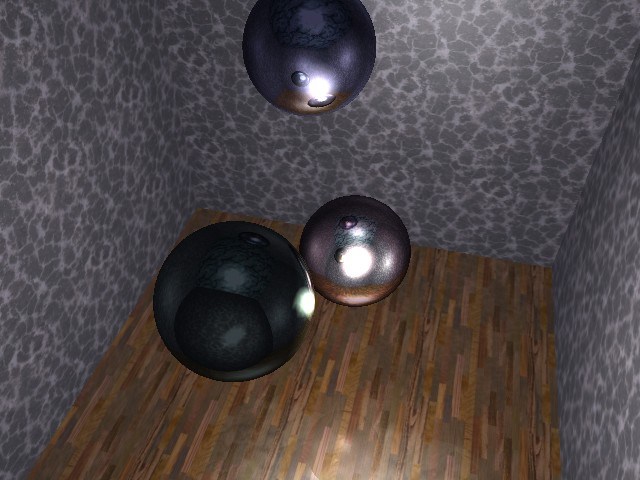 |

Submitted by , posted on 29 August 2002
|
 |

Image Description, by

Inspired by the recent wave of 'realtime raytracing', I decided to try my hand at some accelerated 3d with a 'raytrace' feel to it. The first real test for the new Direct3D 8.1 engine that I have been working on for quite a while.
I tried to pushed my trusty old GF2GTS to the limit with:
3 reflective high-poly spheres (4608 triangles each), with 128x128 dynamic cubemaps
A reasonably high-poly room (242 triangles per plane)
Partly reflective floor
1 dynamic point light source
Specular highlight via modulation with a 256x256 spherical environment map
Trilinear texture filter
Everything in the scene is fully dynamic, through a simple trick
(re-using last frame's cubemaps) an 'infinite' amount of reflections
between any 2 reflective objects is possible.
Sadly my GF2GTS ran out of juice, so I had to lower the polycount a bit (originally the spheres were 8192 triangles, and the walls were 450 triangles each)... I'll try to see if I can squeeze some kind of shadows in anyway.
Anyway, I'm quite happy with the 'raytrace' feel and display quality so far. And performance-wise it's still good... around 75-80 fps.
Time to give it a rest and concentrate on some other parts, in order to stay fresh :)
Scali
|
|

